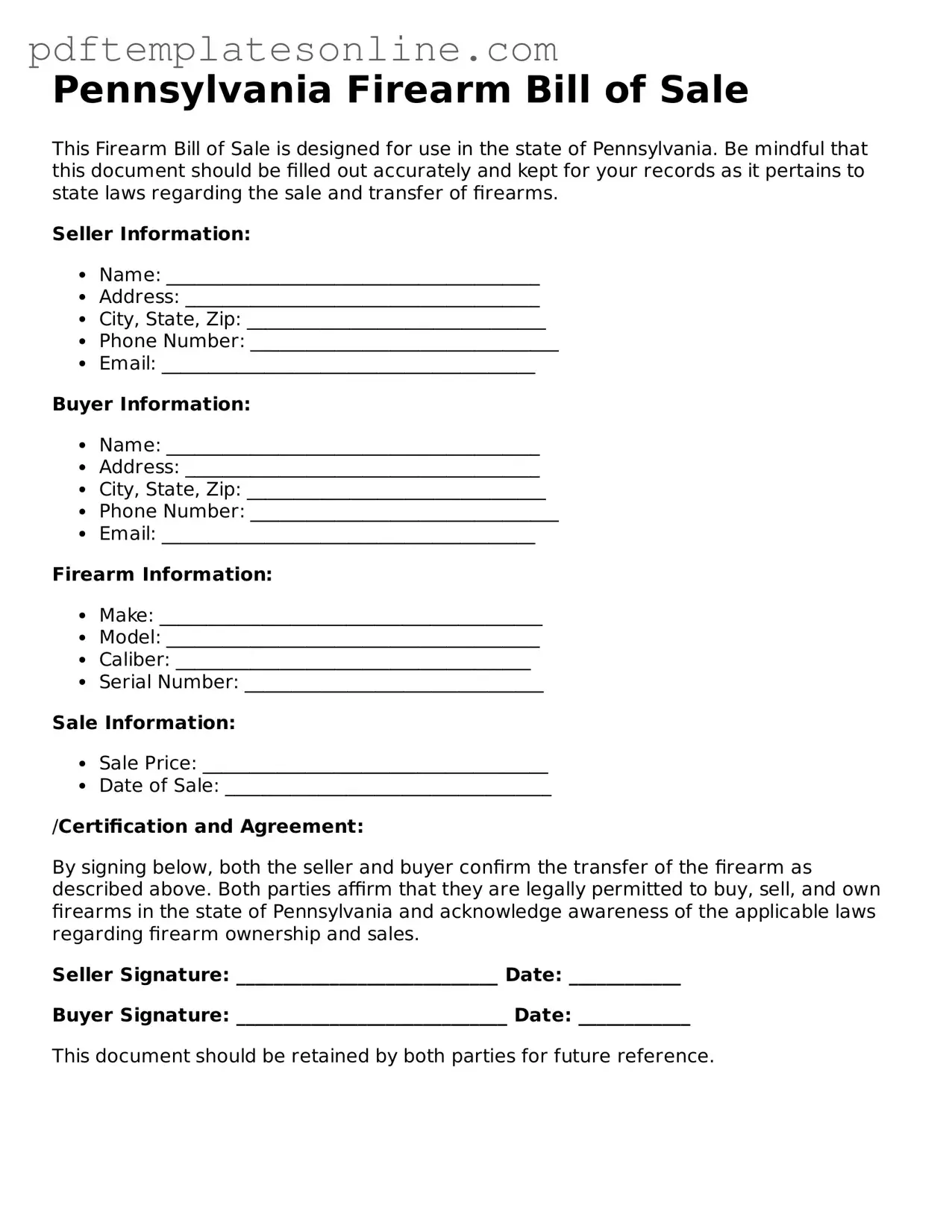Filling out the Pennsylvania Firearm Bill of Sale form can be a straightforward process, yet many individuals make common mistakes that can lead to complications. Understanding these pitfalls can help ensure a smooth transaction. One frequent error is providing incorrect personal information. Buyers and sellers must ensure that names, addresses, and identification numbers are accurate. A simple typo can create confusion or even legal issues down the line.
Another common mistake involves the failure to include a complete description of the firearm. It is crucial to specify the make, model, caliber, and serial number. Omitting any of this information can render the bill of sale incomplete and may raise questions about the firearm’s provenance.
Many people also neglect to sign the form. Both parties must sign the bill of sale to validate the transaction. Without signatures, the document lacks legal standing. Additionally, some individuals forget to date the form. The date is essential as it establishes when the transfer occurred, which can be important for record-keeping and legal purposes.
Another mistake is not keeping a copy of the completed bill of sale. Both the buyer and seller should retain a copy for their records. This documentation can serve as proof of ownership and the terms of the sale, should any disputes arise in the future.
Some individuals may not understand the importance of including the buyer’s identification information. While it may seem redundant, this information helps confirm the buyer's identity and ensures compliance with state regulations. Failing to do so can lead to complications if the transaction is ever questioned.
Additionally, people often overlook the necessity of verifying the buyer's eligibility to purchase a firearm. In Pennsylvania, certain individuals may be prohibited from owning firearms. It is the seller's responsibility to ensure that the buyer meets all legal requirements before completing the sale.
Another mistake is not being aware of the local laws regarding firearm sales. Regulations can vary significantly from one municipality to another. It is vital to research and understand any local requirements that may affect the sale, as ignorance of the law is not a valid defense.
Moreover, some sellers may not clearly communicate the terms of the sale. This includes discussing payment methods, warranties, or any conditions attached to the sale. Clear communication can prevent misunderstandings and foster a more positive transaction experience.
Lastly, individuals sometimes fill out the form under pressure or in haste. Taking the time to carefully review the form before submission can prevent many of these errors. A thorough review ensures that all information is correct and complete, ultimately safeguarding both parties involved in the transaction.
